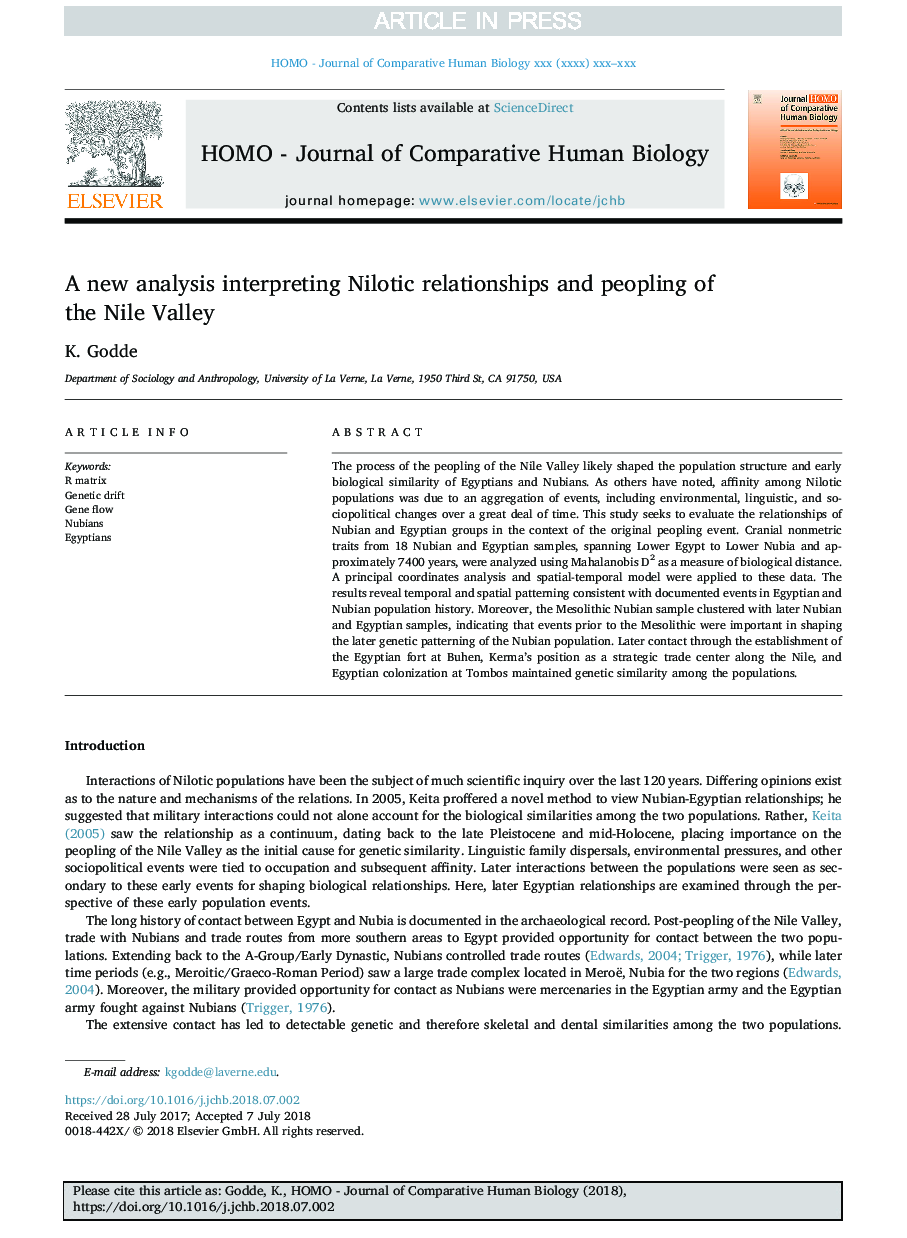| Article ID | Journal | Published Year | Pages | File Type |
|---|---|---|---|---|
| 8959784 | HOMO - Journal of Comparative Human Biology | 2018 | 11 Pages |
Abstract
The process of the peopling of the Nile Valley likely shaped the population structure and early biological similarity of Egyptians and Nubians. As others have noted, affinity among Nilotic populations was due to an aggregation of events, including environmental, linguistic, and sociopolitical changes over a great deal of time. This study seeks to evaluate the relationships of Nubian and Egyptian groups in the context of the original peopling event. Cranial nonmetric traits from 18 Nubian and Egyptian samples, spanning Lower Egypt to Lower Nubia and approximately 7400â¯years, were analyzed using Mahalanobis D2 as a measure of biological distance. A principal coordinates analysis and spatial-temporal model were applied to these data. The results reveal temporal and spatial patterning consistent with documented events in Egyptian and Nubian population history. Moreover, the Mesolithic Nubian sample clustered with later Nubian and Egyptian samples, indicating that events prior to the Mesolithic were important in shaping the later genetic patterning of the Nubian population. Later contact through the establishment of the Egyptian fort at Buhen, Kerma's position as a strategic trade center along the Nile, and Egyptian colonization at Tombos maintained genetic similarity among the populations.
Keywords
Related Topics
Life Sciences
Agricultural and Biological Sciences
Ecology, Evolution, Behavior and Systematics
Authors
K. Godde,
